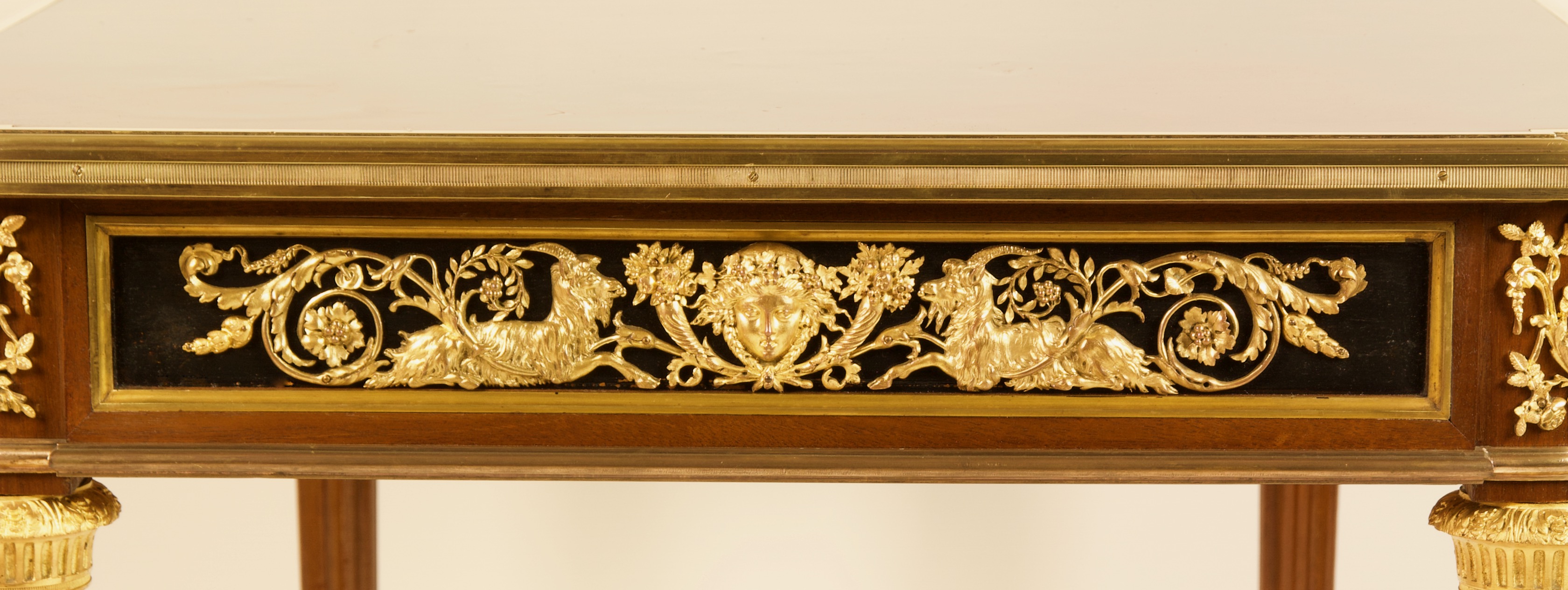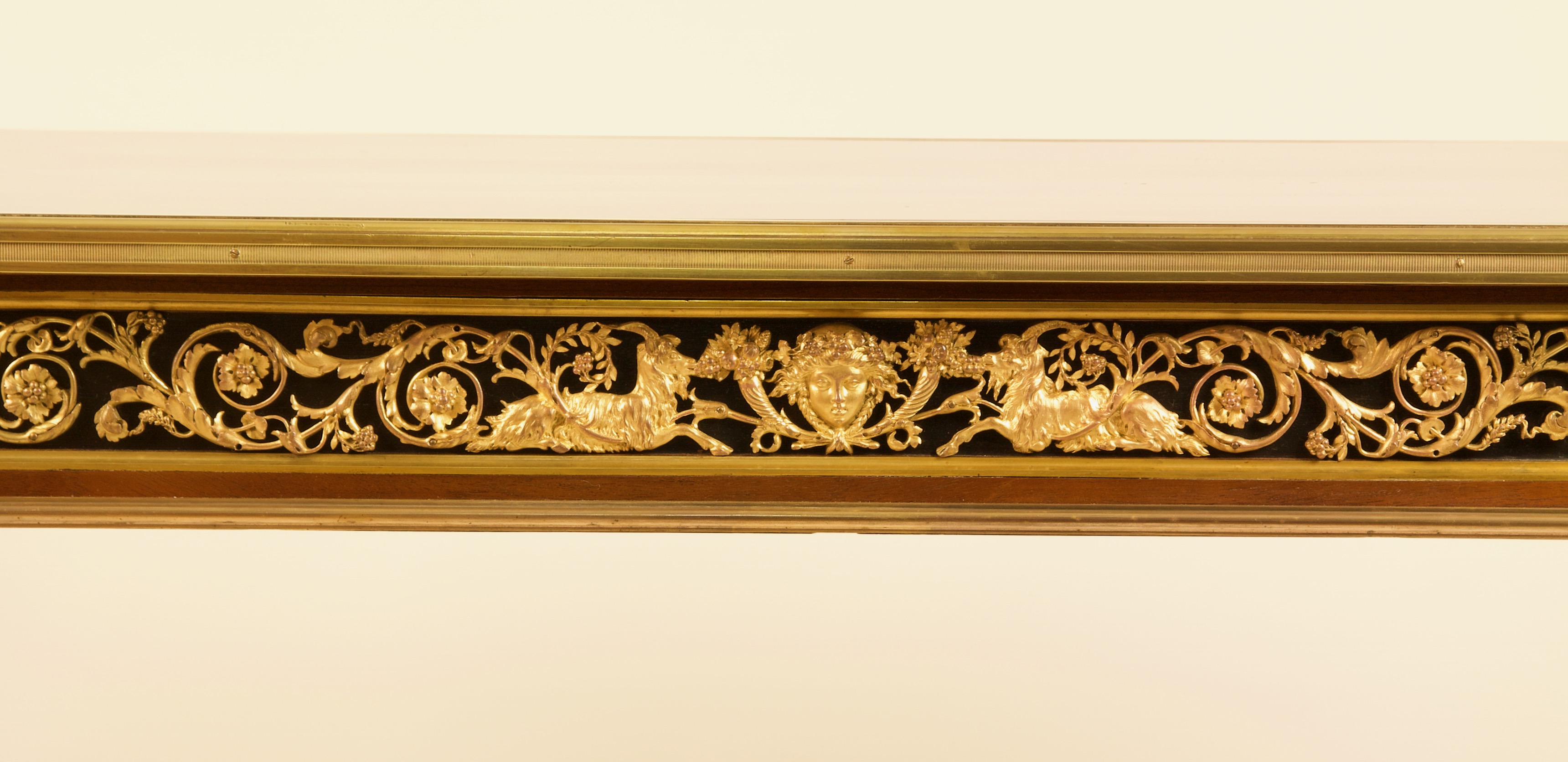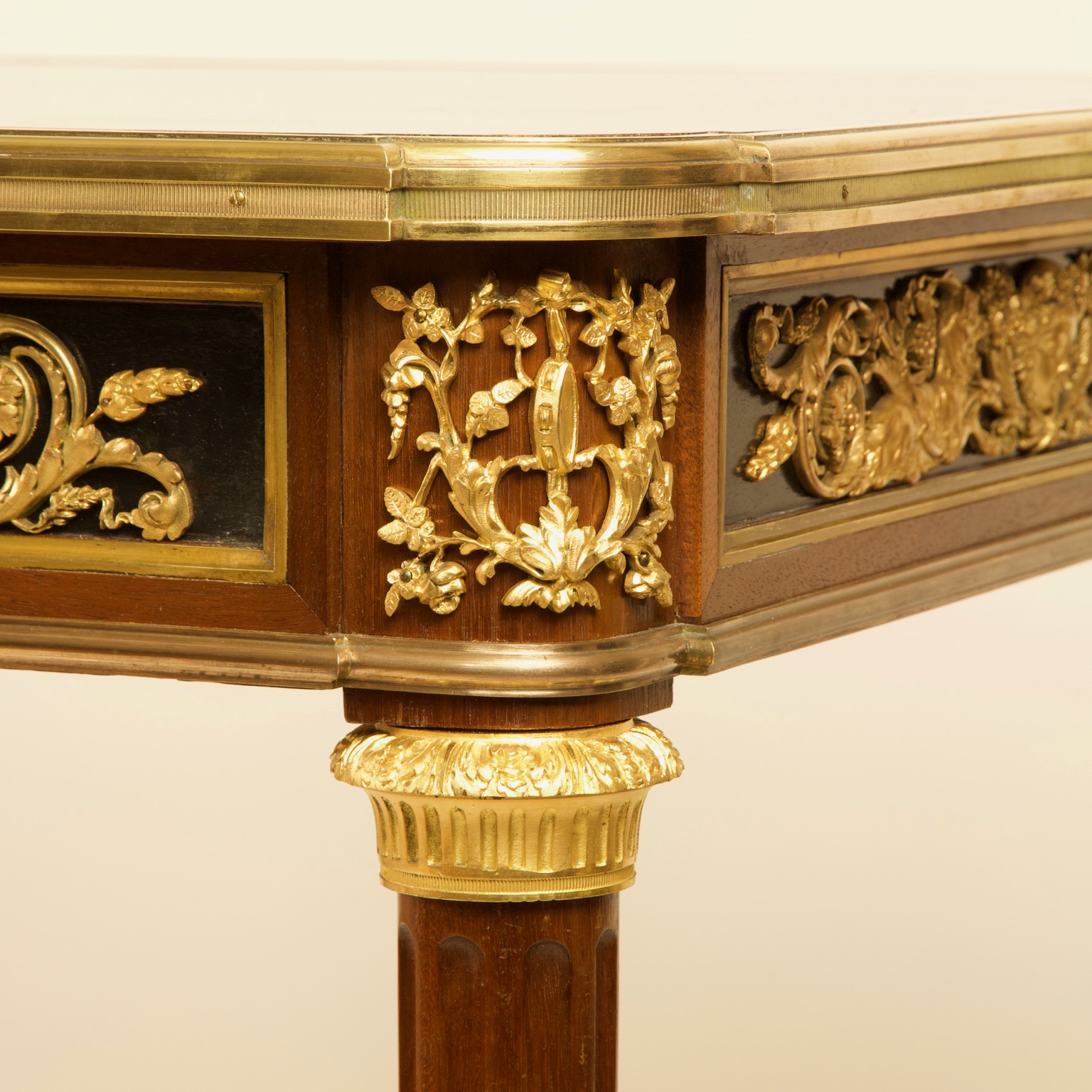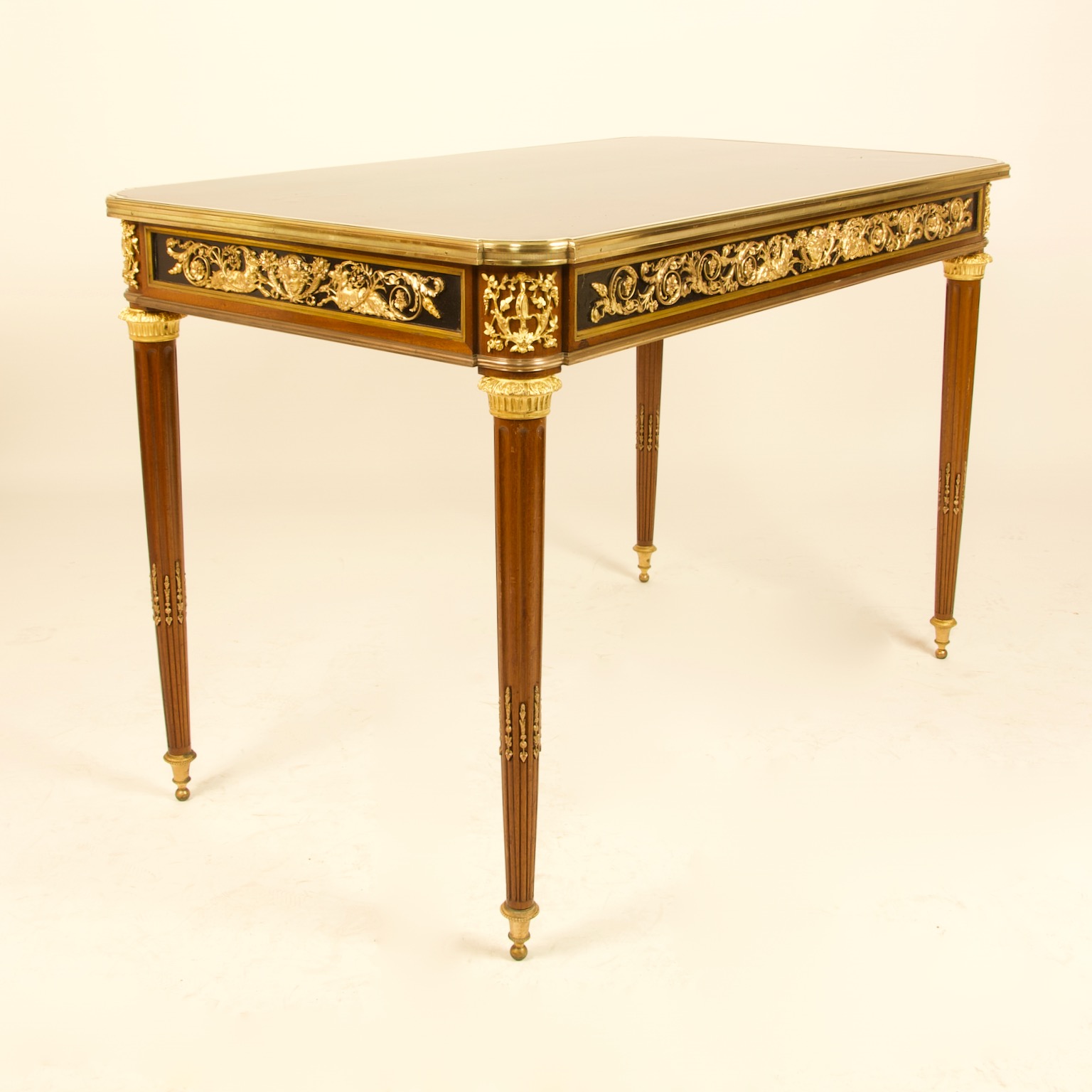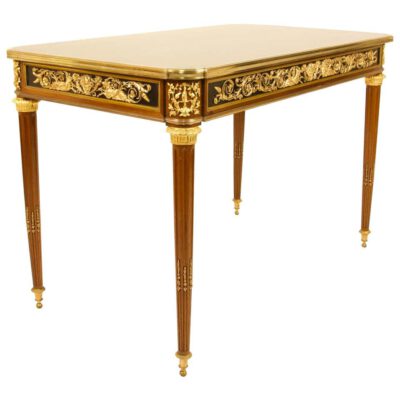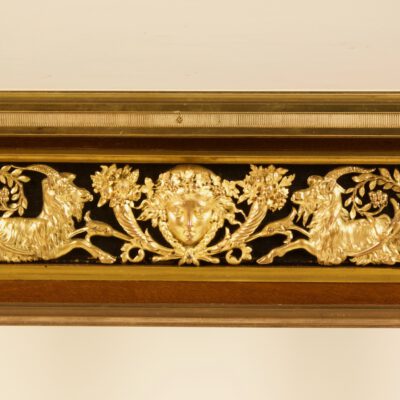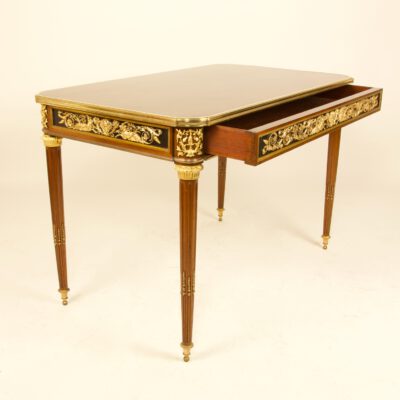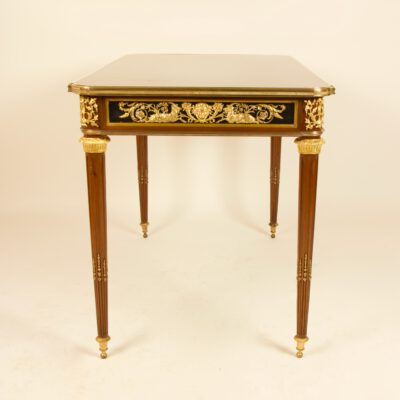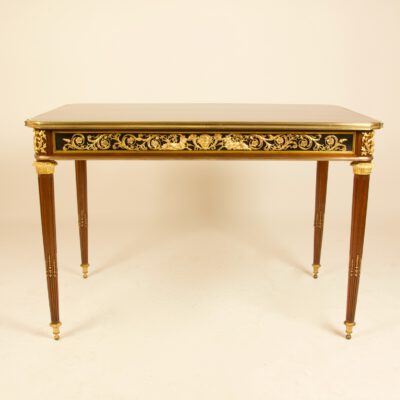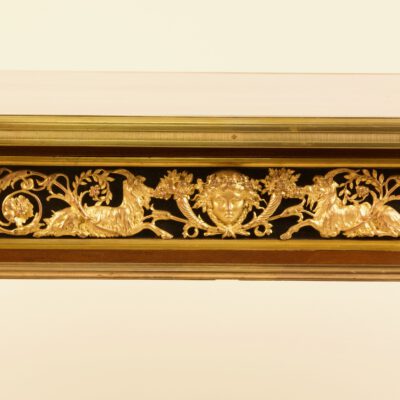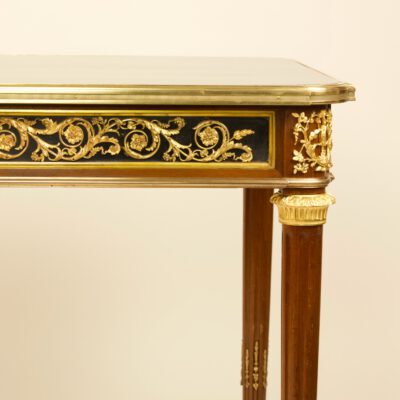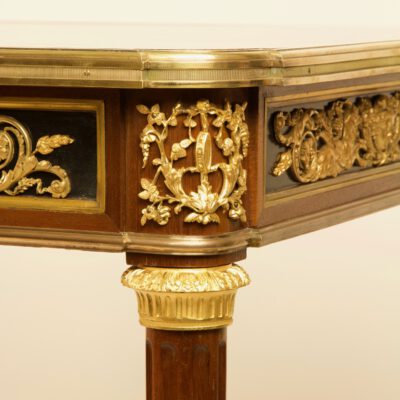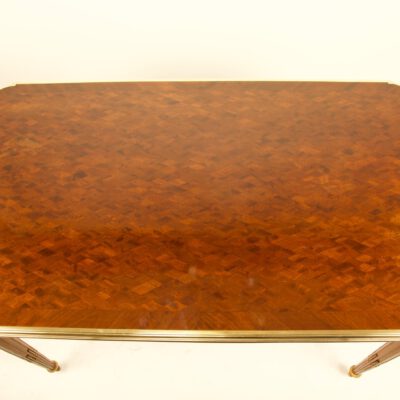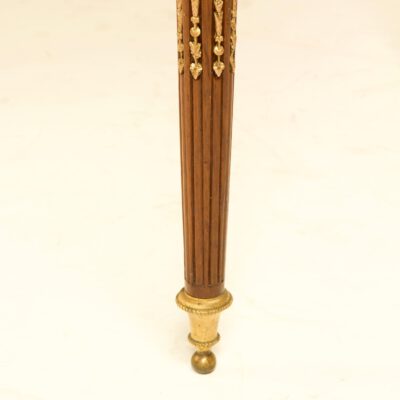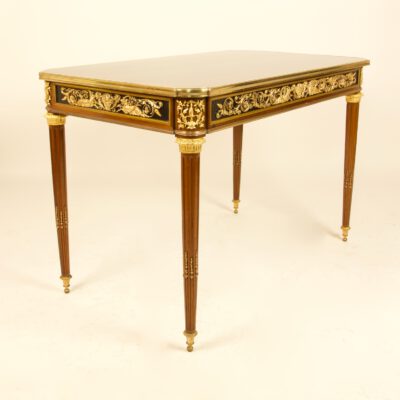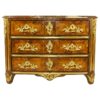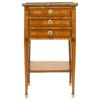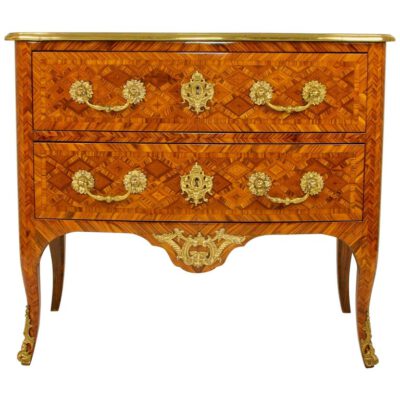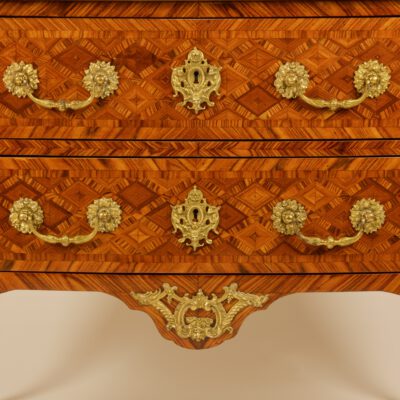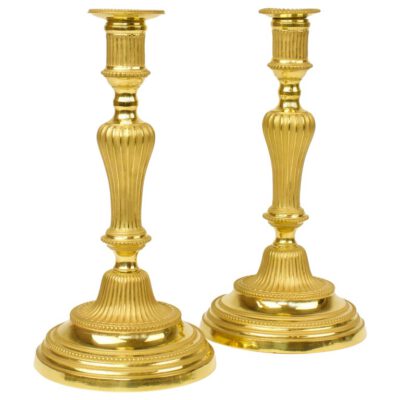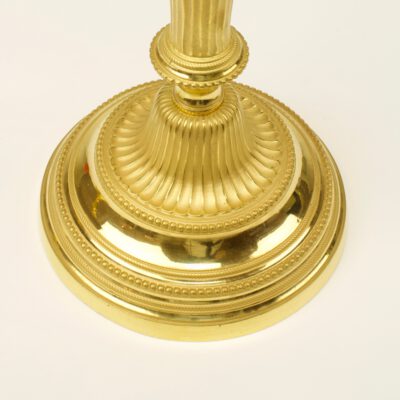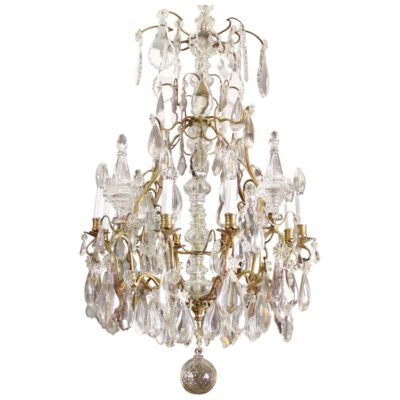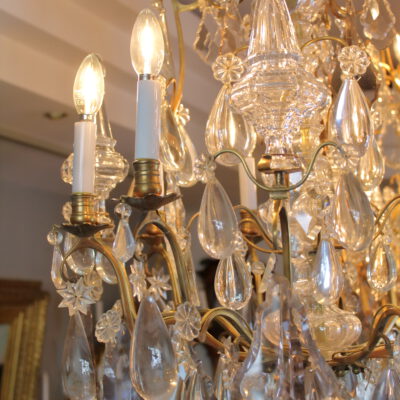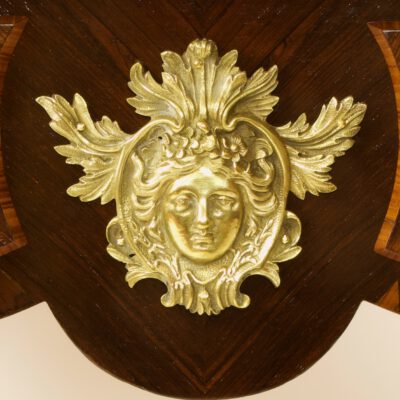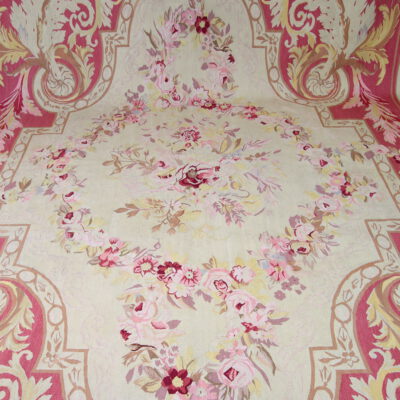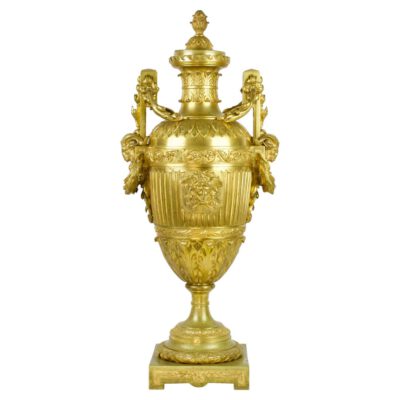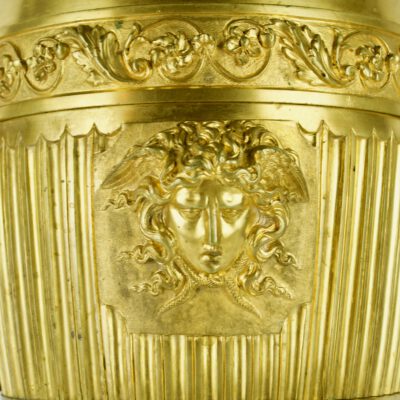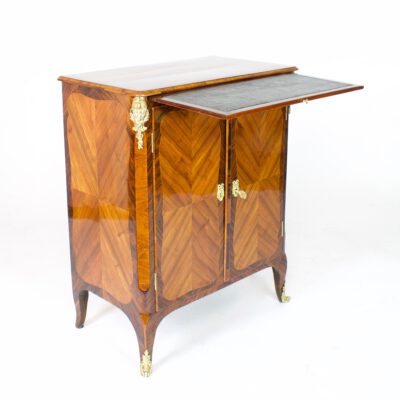An excellent 19th century Louis XVI style bureau plat or center table in the manner of Adam Weisweiler made of mahogany and mahogany veneer probably by Francois Linke (1855-1946) in his early years when working for Maison Krieger:
rising on tapered fluted legs which end in gilt bronze sabots the rectangular table top with rounded corners and a gilt-bronze surround is covered with a fine diamond pattern marquetry. Underneath the table top a narrow table frame holding one frieze drawer which can be opened by a hidden push-button mechanism. The frame is decorated on all four sides with rectangular black-lacquered cartouches, each bearing an elaborately chiseled and excellently gilt bronze mounted Louis XVI style Neoclassical frieze showing a central Bacchante mask framed by a pair of cornucopias and being accompanied by a pair of reclining goats within floral arabesques. The rounded corners are decorated with gilt-bronze mounts in the shape of hanging cymbals within a foliage vignette.
The creation and manufacture of this bureau plat is inspired by works of one of the most famous ebenists of the Louis XVI period, Adam Weisweiler (1744-1820), whose works are of an elegant, slender and light-weight appearance despite an abundance of gilt-bronze decoration in the upcoming Neoclassical style of the second half of the 18th century. The Neoclassical gilt-bronze frieze decoration which is found on this table, was also used by Adam Weisweiler inspired by designs of Pierre Gouthière (1732-1813), one of the most famous metal-workers and designers of the Louis XVI period.
The same bronze mounts can be found on several pieces of furniture of Francois Linke and Maison Krieger, one of the leading Paris manufacturers who offered furniture produced by Linke – this could explain why this beautiful table does not bear the signature of Francois Linke.
Weisweiler received his master title on 1778, and became one of the most brilliant cabinetmakers at the end of the reign of Louis XVI. He received orders from the court, most of the time through the merchant-mercer Dominique Daguerre, who included among his customers, the Prince of Wales, the future George IV of England, to whom he delivered furniture for his residence in Carlton House. Among these pieces of furniture are works by Weisweiler, other works of the cabinetmaker will undoubtedly be bought by the English court, during the revolutionary sales, so that Weisweiler is today very well represented in the royal collections.
François Linke is a French cabinetmaker of Austrian origin (1855 Pankraz/Bohemia – Paris 1946). He was undoubtedly the greatest Parisian cabinetmaker of his time. Having served as an apprentice in his hometown of Pankraz, Bohemia, Linke settled in Paris in 1875 and established his own workshops at 170, rue du Faubourg Saint-Antoine in 1881. There he produced furniture in the different historical styles of the Ancien Regime. In 1900, with his participation at the World’s International Fair in Paris he reached the peak of his career and became known to an international high-class clientel, whose commissions provided him great financial stability. It allowed him to settle in huge apartments on the prestigious Place Vendôme, but also to explore new markets, often distant, by participating in numerous international exhibitions. He thus became the supplier of the most famous and rich families around the world. Linke furnished the residences of rulers such as King Fouad I of Egypt, billionaires such as Raphael de Lamar in New York, Simon Patino, the nicknamed “Andean Rockefeller” or Antonio “Count” Devoto, the famous Argentinian magnate.
Literature: Payne, Christopher: Paris Furniture – the luxury market of the 19th century, p. 410
Weisweiler biography: Kjellberg, Pierre: le mobilier francais du XVIIIe siècle, Paris 2008, p-903-915, p.907 + 913 (bronze decoration)
Condition: very good, min. wear consistent with age and use, min. fading – detailed condition report on request


